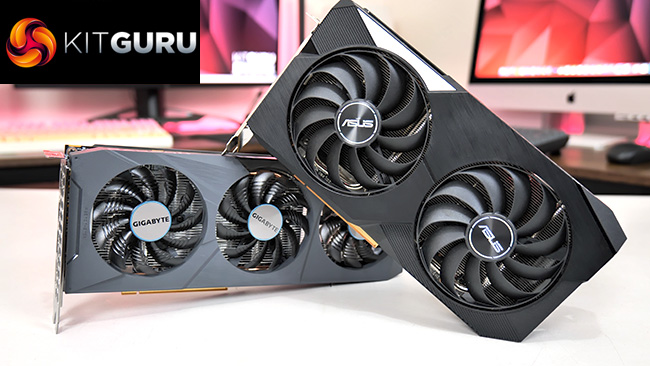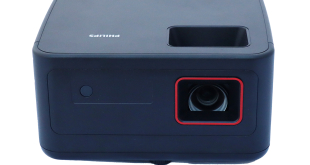We got our first look at AMD's Navi 23 silicon back in August with the launch of the RX 6600 XT, and today the company has unveiled the RX 6600. Using the same GPU as the XT variant but with 256 fewer cores and slower frequencies for both GPU and memory, AMD has accordingly lowered the price, with a £299.99/$329 MSRP compared to £329.99/$379 for the RX 6600 XT.
Just like its bigger brother, the RX 6600 is marketed as a 1080p GPU and that is really where it does best. It wasn't able to offer a locked 60FPS using Ultra settings in every game we tested (Cyberpunk 2077, Red Dead Redemption 2 and Total War Saga: Troy were the notable exceptions), but we never saw lower than 51FPS on average, and in many cases we saw a lot higher – just look at Hitman 3 and F1 2021.
1440p performance isn't so hot though. As with the RX 6600 XT, the RX 6600 has a narrow 128-bit memory interface which can cause performance to fall off at higher resolutions, despite the 32MB Infinity Cache that is present. 1440p is still possible with the RX 6600, but you will get noticeably choppier frame rates in certain games.
It's when looking at relative performance where questions started to be asked about this new GPU. For instance, we saw an average gain of 3% at 1080p versus the RX 5600 XT – which is hardly progress at all. The fact the 6600 is 16% slower on average compared to the 6600 XT, despite being just 9% cheaper in terms of MSRP, also proves hard to justify.
Ray tracing performance is another weak area for this GPU. Of the three games we tested with DXR enabled, the RX 6600 proved slower than the RTX 2060 in all of them at 1080p. To put that into context, the RTX 2060 uses Nvidia's first generation RT cores and was released in January 2019. We know RDNA 2 can't match Nvidia for ray tracing performance, but it does put things into sharp perspective when AMD is asking £300 for this GPU which can't match Nvidia's similarly-priced product from almost three years ago.
The RX 6600 is another AIB-only launch, meaning AMD has not produced a reference card. Instead, we have looked at the ASUS RX 6600 Dual and the Gigabyte RX 6600 Eagle. Both are excellent designs, offering identical gaming performance with coolers that are really overkill for this level of GPU. I'd certainly be happy to use either of these cards in my own PC, and which you prefer will come down to the design more than anything else.
We have also implemented our recently-updated GPU power testing methodology as part of this review, so if you want to see power draw figures on a per-game and per-resolution basis, you can find that starting on page 29 of this review. We found that the RX 6600 is an exceptionally frugal GPU, typically drawing no more than 125W under load. That makes it the most efficient GPU of its class, offering more performance per Watt than even the RX 6600 XT or RTX 3060 Ti.
Overclocking was pretty straightforward with the RX 6600 too. Both cards we tested proved stable with an extra 120MHz added to the GPU, while we were able to max out the memory slider at 1900MHz. These tweaks resulted in performances gains of 6-7% in our testing, so that's pretty typical of RDNA 2 as a whole. I do think we could get more from the 6600 though, as we know GDDR6 can overclock well beyond 15.2Gbps which is the current limit AMD has imposed.
All told, it is safe to say the AMD RX 6600 is not going to be exciting anybody. In fact, it's hard to see this as anything but a regression – average performance is just 3% better than the RX 5600 XT, but the MSRP has been increased by 18%. It really does feel that AMD has stopped trying to be competitive in the mid-range.
And yet, such is the state of the market that the RX 6600 is looking like it will actually be one of the best value GPUs going. Ignoring the £299.99 MSRP, which we all know is just meaningless, we've been told to expect UK pricing at £399-419. That is admittedly outrageous for a GPU of this calibre, but when the only RX 6600 XTs, in stock, start at £499, and RTX 3060 starts at £559, it actually becomes one of the best deals available.
Of course, that doesn't mean you should just go and buy one, as paying that sort of cash for something which should really be no more than £220, isn't going to sit well for many. However, we've been told stock is looking good for launch, so considering the state this market has been in for months now, the RX 6600 could be worth considering.
Discuss on our Facebook page HERE.
ASUS RX 6600 Dual
Pros
- Understated design.
- Metal backplate
- Solid 1080p performance.
- Very power efficient.
- Cool and quiet under load.
- Expected to be, relatively speaking, good value considering the current climate.
Cons
- Barely an improvement on the RX 5600 XT.
- Expected pricing of £400+ is just depressing considering the performance.
- Weak ray tracing performance.
Gigabyte RX 6600 XT Eagle
Pros
- Understated design.
- Solid 1080p performance.
- Very power efficient.
- Cool and quiet under load.
- Expected to be, relatively speaking, good value considering the current climate.
Cons
- Barely an improvement on the RX 5600 XT.
- Expected pricing of £400+ is just depressing considering the performance.
- Weak ray tracing performance.
- Plastic backplate instead of metal.
KitGuru says: In any other time, the RX 6600 would be ridiculed for the price to performance on offer. At this stage in 2021 though, given the expected availability and relatively competitive pricing, it could be one to consider if you really need a new GPU.
 KitGuru KitGuru.net – Tech News | Hardware News | Hardware Reviews | IOS | Mobile | Gaming | Graphics Cards
KitGuru KitGuru.net – Tech News | Hardware News | Hardware Reviews | IOS | Mobile | Gaming | Graphics Cards




